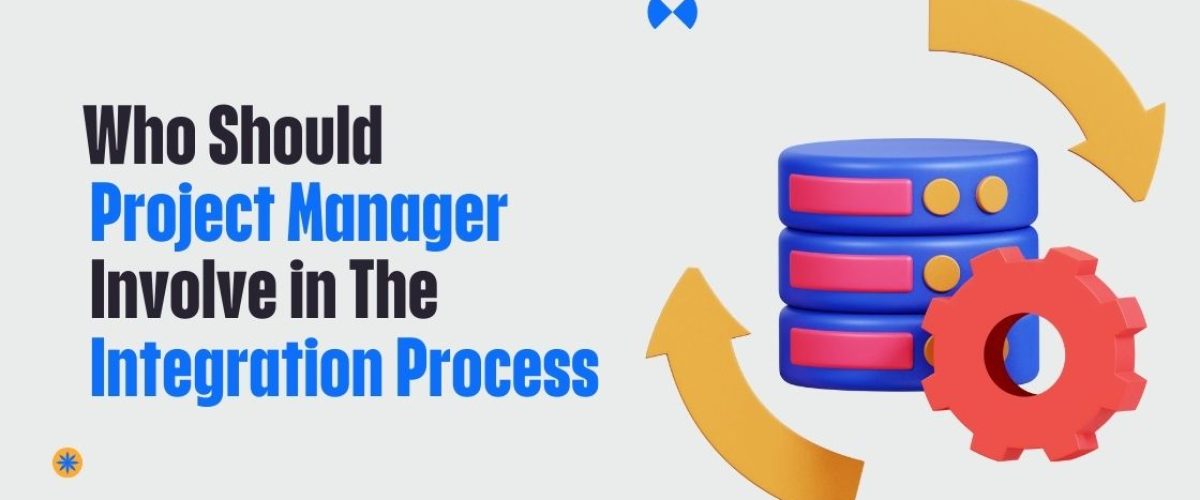The integration process is like the heartbeat of any project. It’s the part where everything comes together and makes sense. But it’s not just about putting the pieces together; it’s also about who helps put them together.
As a project manager, choosing the right people to be involved in this process can make a huge difference between a successful project and one that doesn’t work out.
So, let’s explore the human side of Project management. Who should you include? How can you make sure everyone understands the plan? And why is this so important?

What is Integration in Project Management?
Project management integration is more than just putting different parts of a project together. It’s about making sure everything works well with the other parts so the whole project goes smoothly.
It’s like leading a band where each instrument needs to play in tune to make a great song. From organizing resources to matching up timelines, integration is what keeps the project connected. But this connection needs the right people to make it work.
Stakeholders to Consider in the Integration Process
When working on integration, finding and involving the right people from the start can save you a lot of problems later. But who are these important people? Let’s break it down.
The Role of the Project Sponsor
The project sponsor is like the captain of a ship—they give direction, resources, and support. Without their help, even the best plans can go wrong. They speak up for the project with higher-ups, make sure there’s enough money, and solve problems that come up.
Having the sponsor involved in project integration management keeps everything on track with the organization’s goals and ensures there’s someone backing you when things get tough.
Team Members: The Frontline Heroes
Your team members are the ones doing the work and making things happen. They know the details of the project better than anyone. By including them in the integration process, you get their valuable ideas, understand possible problems, and make them feel important. Nobody wants to feel like just a small part; they want to be heard and valued.
Clients: The Often-Overlooked Piece
Clients are usually seen as the final goal, but they shouldn’t just be involved at the start and end of a project. Including clients in the integration process helps make sure their expectations are met and that the project matches their vision. It’s like using a GPS in an unfamiliar area—without it, you might get lost or end up in the wrong place.
Vendors and Suppliers
No project works alone, and vendors and suppliers are a big part of the process. They do more than just provide materials—they can offer useful information on timing, availability, and costs.
Involving them early helps build good relationships and avoid surprises that could mess up the project.
The IT and Tech Team
Technology is key to many projects, and the IT team keeps it running smoothly. They handle everything from software to security, making sure all tech parts work well together.
Bringing them into the process early helps find and fix tech problems before they become big issues, so the tech side of the project supports its goals.
Financial Advisors and Accountants
Money is important in project management. Financial advisors make sure the budget fits the project and that resources are used wisely. Their involvement helps keep the project on budget and prevents running out of money partway through due to mistakes in budgeting.
Legal and Compliance Experts
Following rules and regulations can be tricky, and missing something could cause problems. Legal experts make sure the project follows all laws and rules, avoiding expensive mistakes.
End Users: The Ultimate Beneficiaries
End users are the people who will use the finished product, so their feedback is really important. Including them in the integration process helps you get their thoughts, ensuring the final product is useful and easy to use, which increases its chances of success.
Change Managers
Change managers help make transitions smooth. They work to make sure changes don’t feel sudden or disruptive, and they address any concerns that come up. Their role is key to making sure the integration is a smooth and well-managed process.
You might also like this: Does a Project Manager Track and Record Changes?
Best Practices for Involving Stakeholders
Early Engagement
Involving stakeholders from the beginning makes sure their needs and expectations are considered right away. This helps align goals and avoids problems later on.
Regular Updates and Feedback Loops
Keeping stakeholders updated regularly and asking for their feedback helps build trust and teamwork. This way, you can manage their expectations and make changes based on their input.
Documentation and Reporting
Writing down what happens during the integration process and how stakeholders are involved creates a record of decisions and changes. This helps track progress and solve any problems that come up.
Training and Support
Giving stakeholders training and support makes sure they can contribute effectively. This helps them overcome challenges and improves the overall success of the project.
The Role of Communication
If integration is the heartbeat, then communication is the blood that keeps everything going. Open and clear communication helps everyone stay on the same page, makes sure information is shared properly, and avoids misunderstandings that could mess up the integration. It’s not just about talking—it’s about really listening to everyone involved.
Common Pitfalls of Exclusion
Leaving important people out of the integration process can cause delays, confusion, and even failure of the project. This often leads to stress in project management.
Think of it like building a car without asking the engineer for advice—it might look nice, but it probably won’t work well. The same goes for project integration; if you don’t have the right people involved, you’re likely to face many problems.
Conclusion
Integration isn’t just another part of managing a project; it’s the heart of what makes a project successful. By bringing in the right people—those with different skills and ideas—you make the project run more smoothly and get valuable insights that can make it even better.
So, the next time you’re working on a project, remember: it’s not just about putting the pieces together, but also about the people who help make it all work.
Frequently Asked Questions
Involving stakeholders early helps spot possible problems, make sure everyone has the same expectations, and ensures that all needs are considered. This leads to a more successful project.
The project sponsor gives direction, resources, and support, making sure the project stays on track with the organization’s goals and has the help it needs to succeed.
When clients are involved, the project is more likely to meet their expectations and match their vision. This helps avoid misunderstandings and changes later on.
Financial advisors help make sure the project budget is realistic and that money is used wisely. This prevents financial problems that could slow down or stop the project.
Excluding important stakeholders can lead to confusion, missed chances, and even project failure, because their important ideas and expertise are not included in the process.
Try KolApp
Free 14 Day Trial
Table of Contents
Subscribe to our Newsletter
Subscribe to our newsletter and stay updated!

